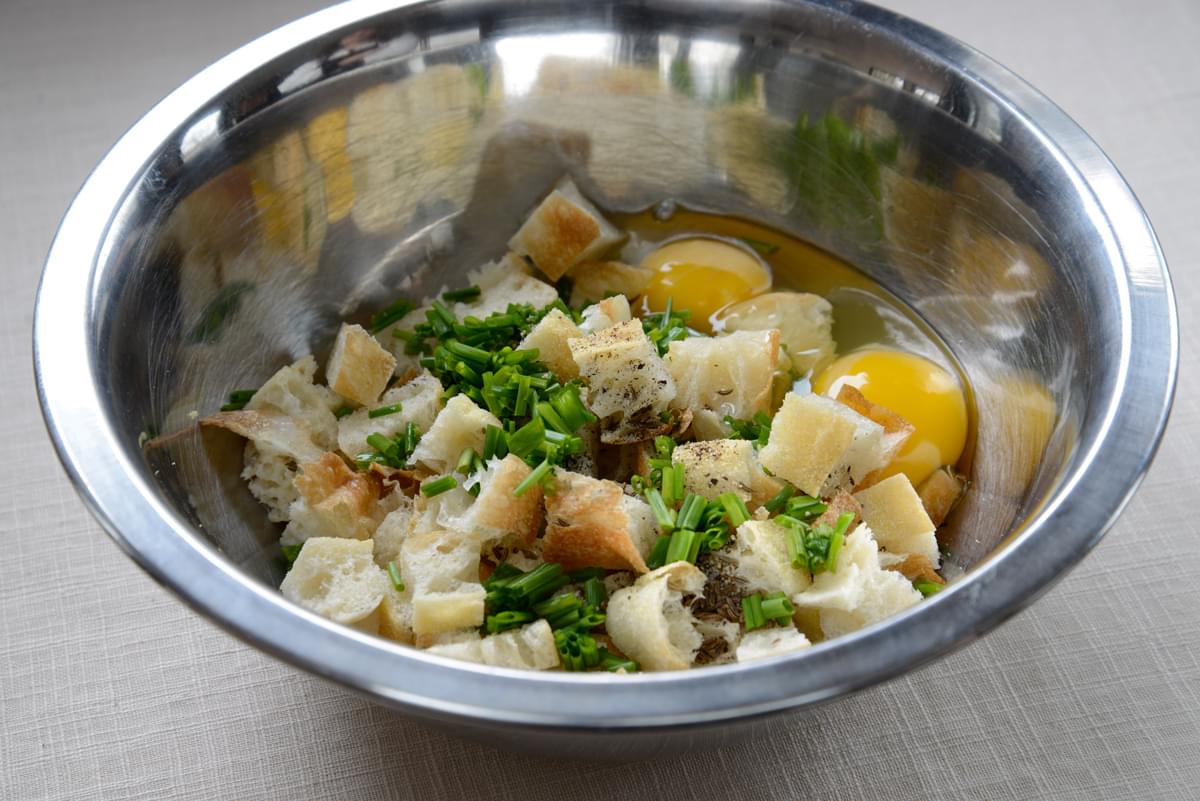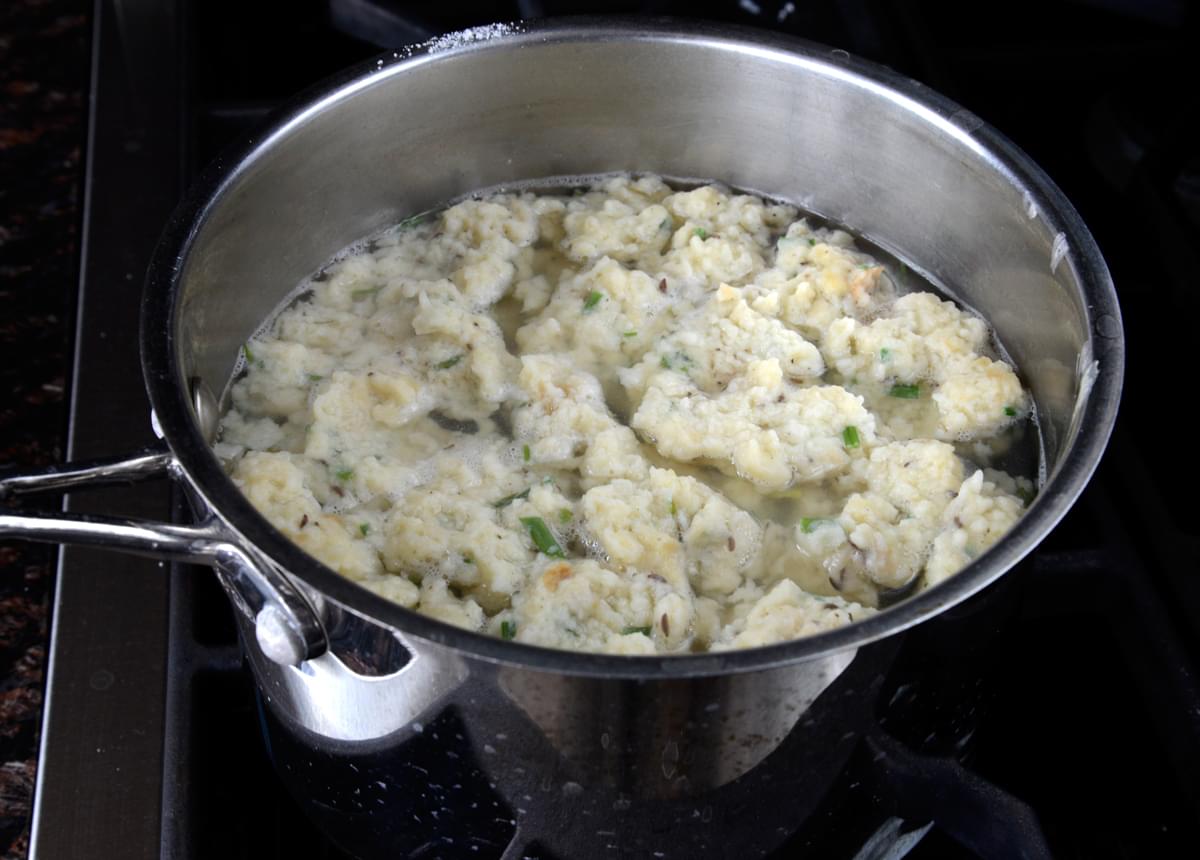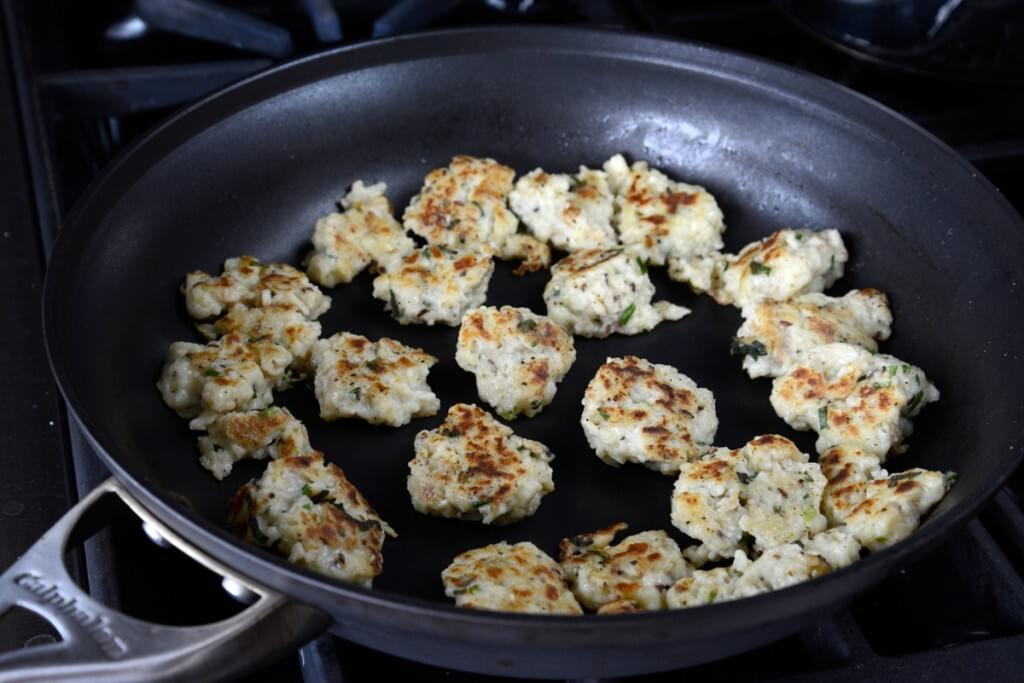
Bread Gnocchi, aka one of my favorite cool weather comfort foods
3 minute read
Have you ever heard of canederli? Chances are you haven’t. Even most Italians are unfamiliar with these plump, herb-flecked bread gnocchi. Hailing from the northern region of Trentino-Alto Adige on the Austrian border, canederli are known in German as knodel; in fact, they are an Austrian legacy, and few Italians living outside German-speaking Trentino-Alto Adige are on a first-name basis with them. And that’s too bad, because canederli are perfect cold weather fare. They’re most often served as a first course, but I like them as a main, accompanied by an assortment of roasted vegetables, cured meats like Speck (a smoked Prosciutto from Trentino-Alto Adige), and savory cheeses like Asiago or Piave. You can also present them alongside meat and poultry, where they’ll pick up the sauce; or drop them in a bowl of chicken or vegetable soup as a soothing starter.
Canederli are usually rolled by hand (like gnocchi) and served floating in soup, but I prefer them pan-fried until golden brown in sage butter. I like my canederli quite soft, so I make the mixture too sticky to roll out on a counter, and use 2 spoons to drop it into simmering water instead. My hands stay clean that way, and the canederli turn out light rather than dense and heavy.
Canederli should be made with a close-textured, unflavored, stale bread: if the bread is light and airy, or if it is too fresh, it will absorb too much liquid and therefore call for too much flour, resulting in leaden dumplings. You can use rye bread or whole wheat bread if you like; frankly, canederli were born as a way to use up leftover bread, so use whatever you have on hand and enjoy the subtle differences in the resulting gnocchi depending on the bread you use from time to time.
The recipe below is based on the one I published in my first cookbook, Rustico: Regional Italian Country Cooking. We also have a different version with plenty of technique tips and ingredient notes available as a video recipe for members of our video membership site, so be sure to check that out as well.
Let us know if you try either version of our canederli at home and email us photos. Happy cooking and buon appetito!

Canederli in Herb Butter
Serves 2 as a main course, 4 as an appetizer or side dish
- 115 grams (4 ounces) crustless day-old white country bread, cut into 1/2-inch (1.5-centimeter) cubes
- 1 cup snipped chives
- 1 teaspoon caraway seeds
- 2 tablespoons plus ¾ teaspoon salt
- ¼ teaspoon freshly ground black pepper
- 2 large eggs
- 125 milliliters (½ cup) whole milk
- 30 grams to 65 grams (1 to 2 ounces) unbleached all-purpose flour, plus extra if needed
- 30 grams (1 ounce) unsalted butter
- 12 sage leaves, thinly sliced
 Place the bread in a large bowl. Add
the chives, caraway, ½ teaspoon of the salt, and the pepper. Stir a bit to mix,
then add the eggs and mash vigorously with your hands until the bread breaks
down. Add the milk and mash again; the point is to create a dense paste with
the ingredients at this stage.
Place the bread in a large bowl. Add
the chives, caraway, ½ teaspoon of the salt, and the pepper. Stir a bit to mix,
then add the eggs and mash vigorously with your hands until the bread breaks
down. Add the milk and mash again; the point is to create a dense paste with
the ingredients at this stage.
Add the flour and mash again with your hands; the mixture should hold together and form a gluey paste; add more flour by the tablespoon if it does not. The mixture should be sticky at this point; if it is not sticky, it will form heavy canederli once cooked. Depending on how stale and dry your bread is, the mixture will require different amounts of flour: drier, staler bread requires less flour. If not cooking right away, cover and set aside for up to 2 hours at room temperature.
Before cooking all the canederli, I suggest testing their texture so you can adjust with additional flour if needed.
 When you are ready to serve, bring 4
quarts (4 liters) of water to a boil. Add 2 tablespoons of the salt. Using 2
spoons, drop 1 tablespoon of the batter into the boiling water, and cook until
it bobs to the surface. The canederli is not fully cooked at this point, but
you can gauge its texture; if it has fallen apart and disintegrated into the
water, the batter requires additional flour to hold it together, so add a bit
of flour and mix again to incorporate, then test the batter again. It is
fine if a few small bits do come away, but the test canederli should remain
mostly whole.
When you are ready to serve, bring 4
quarts (4 liters) of water to a boil. Add 2 tablespoons of the salt. Using 2
spoons, drop 1 tablespoon of the batter into the boiling water, and cook until
it bobs to the surface. The canederli is not fully cooked at this point, but
you can gauge its texture; if it has fallen apart and disintegrated into the
water, the batter requires additional flour to hold it together, so add a bit
of flour and mix again to incorporate, then test the batter again. It is
fine if a few small bits do come away, but the test canederli should remain
mostly whole.
 Return the water to a gentle boil.
Drop the batter by the tablespoon into the water, forming about 20
tablespoon-sized dumplings. They will look misshapen and lumpy, and some small
bits may float off and break away, but that is fine. Maintain the heat so
the water is just simmering, not vigorously boiling, or the canederli may
disintegrate. Cook 8 minutes, uncovered.
Return the water to a gentle boil.
Drop the batter by the tablespoon into the water, forming about 20
tablespoon-sized dumplings. They will look misshapen and lumpy, and some small
bits may float off and break away, but that is fine. Maintain the heat so
the water is just simmering, not vigorously boiling, or the canederli may
disintegrate. Cook 8 minutes, uncovered.
Remove with a slotted spoon to a tray. You can do this up to 4 hours ahead and hold at room temperature on an oiled tray, covered with plastic wrap.
Melt the butter with the sage over medium-high heat in a nonstick 12-inch (30-centimeter) skillet. Add the canederli and sauté 5 to 8 minutes, or until golden all over, turning to cook evenly. Sprinkle with the remaining ¼ teaspoon of salt and serve hot.
